|
|
|
 |
 |
 |
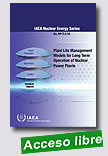 |
Plant Life Management Models for Long Term Operation of Nuclear Power Plants
IAEA Nuclear Energy Series, 2015, 134 p
When nuclear power plants reach the end of their nominal design life, they undergo a special safety review and an ageing assessment of their essential structures, systems and components for the purpose of validating or renewing their licence to operate for terms beyond the service period originally intended. Three different plant life management models have been used to qualify these nuclear power plants
|
to operate beyond their original design life. This publication presents a collection of sample licensing practices for long term operation among IAEA Member States. The various plant life management models used to obtain long term operation authorizations are described and comparisons drawn against the standard periodic safety review model. Lessons learned and warnings about possible complications and pitfalls are also described to minimize the licensing risk during operation and future long term operation applications. The main intention of this publication is to support nuclear power plant owners and operators planning an extension of plant operation beyond its original design life, but it also serves as a useful guide for those interested in procuring from the beginning, the necessary tools to implement ageing management in their future plant with long term operation in mind.
Extraído de: http://www-pub.iaea.org/books/IAEABooks/10520/Plant-Life-Management-Models-for-Long-Term-Operation-of-Nuclear-Power-Plants
|
 |
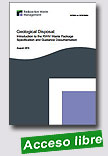 |
Geological Disposal: Introduction to the RWM Waste Package Specification and Guidance Documentation
Nuclear Decommissioning Authority (NDA - UK), 18 August 2015, 33 p.
This document forms part of the Waste Package Specification and Guidance Documentation (WPSGD), a suite of documents prepared and issued by Radioactive Waste Management Ltd (RWM). The WPSGD is intended to provide a user-level interpretation of the RWM packaging specifications, together with guidance to assist waste packagers in the development of |
plans for the packaging of higher activity waste in a manner suitable for geological disposal.
This document provides an introduction to the WPSGD by listing the documents that it comprises and explaining their roles. The WPSGD is subject to periodic enhancement and revision. Users are therefore advised to refer to the RWM website, or contact RWM, to confirm that they are in possession of the latest version of any documentation used.
Extraído de: http://www.nda.gov.uk/publication/wps10004-geological-disposal-introduction-to-the-rwm-waste-package-specification-and-guidance-documentation
|
 |
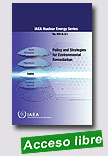 |
Policy and Strategies for Environmental Remediation
IAEA Nuclear Energy Series, 2015, 32 p.
To assure the safe, technically optimal and cost effective management of remediation situations, appropriate policies and strategies are required. This publication describes the goals, time scales, efforts necessary for implementation, cost allocation and the different interests of concerned parties with regard to environmental remediation works. It clarifies the differences between a policy and a strategy, and provides advice to Member States on the typical composition and .
|
formulation of such documents. Along with previously published IAEA safety publications on environmental remediation, this publication will help national authorities to recognize the necessity for including environmental remediation as a required component in the planning and execution of nuclear related initiatives. Recent events have shown that the existence of an established policy and strategies on environmental remediation prior to nuclear and/or radiological accidents can be of fundamental importance, as it will among other things facilitate the dialogue to be established with different affected parties
Extraído de: http://www-pub.iaea.org/books/IAEABooks/10622/Policy-and-Strategies-for-Environmental-Remediation
|
 |
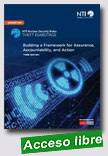 |
Six years ago, world leaders gathered for the first time to collectively address the growing threat of catastrophic nuclear terrorism. At that first Nuclear Security Summit in 2010, the leaders launched a major initiative to lock down the more than 2,000 metric tons of weapons-usable nuclear materials then spread across the globe and to reduce stocks of plutonium
|
and highly enriched uranium, which are the key ingredients needed to build a nuclear weapon.
Today, as leaders prepare to gather in Washington, D.C., for their fourth and final summit, they can cite progress on their pledge to protect vulnerable nuclear materials from theft by terrorists seeking weapons of mass destruction and to build a robust nuclear security system involving all states in the ongoing protection of dangerous nuclear materials. Since early 2010, a dozen countries have eliminated weapons-usable nuclear materials from their territories, dozens more have strengthened their nuclear security practices and policies, and a key internationaltreaty is closer to entry into force.
However, the global threat environment has worsened. At the same time, progress on goals set during the first three summits has slowed, according to the results of the 2016 NTI Nuclear Security Index (NTI Index). It’s a troubling development at a time of escalating and evolving
threats from sophisticated and well-financed terrorist organizations, from nuclear smugglers, and from hackers capable of launching devastating cyber attacks at nuclear facilities.
In addition, the current global nuclear security system still has major gaps that prevent it from being truly comprehensive and effective. For instance, no common set of international standards and best practices exists, there is no mechanism for holding states with lax security
accountable, and the legal foundation for securing materials is neither complete nor universally observed. Without a comprehensive and effective global system in place, states’ approaches to nuclear security continue to vary widely, thereby creating dangerous weak links that terrorists could exploit as they seek the easiest path to weapons-usable nuclear materials.
Extraído de: http://2016.ntiindex.org/wp-content/uploads/2013/12/NTI_2016-Index_FINAL.pdf |
 |
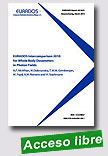 |
EURADOS Intercomparison 2010 for Whole Body Dosemeters in Photon Fields
European Radiation Dosimetry e.V. (EURADOS), March 2015, 214 p.
The systems tested during this exercise included 59 TLD, 13 Film, 8 OSL and 5 dosemeter systems based on other techniques (Other), i.e. radiophotoluminescence (RPL), direct ion storage (DIS) or active personal dosemeters (APD). In IC2008, OSL systems were included in the Other category but the increase in the number of the these systems in IC2010
|
was considered to be sufficient to include them as a separate category for this analysis. A total of 2210 dosemeters were handled by the coordinator of which 1700 dosemeters were irradiated. All irradiations were carried out by a selected metrology laboratory, accredited to EN ISO/IEC 17025 in accordance with the irradiation plan developed by the OG. The metrology laboratory selected for IC2010 was the Austrian Federal Office of Metrology (BEV).
Out of the total of 85 systems, 67 reported Hp(10) and Hp(0.07 ), 18 reported Hp(10) results only. In general, the participants showed a very satisfactory performance with only 5% outliers from the total reported values. 74% systems had no outliers from the trumpet curve criteria. 86% of the systems fulfilled the ISO 14146 performance criteria (max. 2 outliers are allowed). Film systems showed a big improvement compared to IC2008 (down from 25% outliers in IC2008 to 7% in IC2010). The median of all response values was very close to unity (0.99).
The influence of dosemeter design on the response values was examined at the participants meeting held at AM2011 in Prague with discussion on both general aspects of this intercomparison and specific system problems.
The intercomparison results can assist the participants to show compliance with their quality management system, compare their results with those from other participants and develop action plans for improvement of their systems. The high number of participants confirms that there is strong demand for international intercomparisons exercises, particularly in Europe, and that these are of significant operational value for Individual Monitoring Services (IMS). In 2012 two further intercomparisons were started: one for whole body dosemeters for photon fields and one for whole body dosemeters for neutron fields.
Extraído de: http://eurados.org/~/media/Files/Eurados/documents/
EURADOS%20Report%202015-01%20online.pdf |
 |
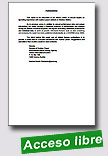
|
Operating Experience with Nuclear Power Stations in Member States in 2014 - 2015 Edition (CD-ROM)
IAEA, 2015, 3.073 p.
This report is the forty-sixth in the IAEA’s series of annual reports on operating experience with nuclear power stations in Member States.
As in previous years, in addition to annual performance data and outage information, the report contains a historical summary of performance and outages during the lifetime of individual plants and figures illustrating worldwide |
performance and statistical data. In order to provide enhanced features such as data searching and analysis, the report has been published electronically on a CD-ROM since 2006.
The intent behind this report and all related Agency publications is to provide a useful tool for everyone concerned with nuclear power. Suggestions and corrections from readers would be most welcome.
Extraído de: http://www-pub.iaea.org/MTCD/Publications/PDF/OPEX_2015_CD_web.pdf
|
 |
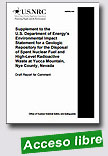 |
Supplement to the U.S. Department of Energy's Environmental Impact Statement for a Geologic Repository for the Disposal of Spent Nuclear Fuel and High-Level Radioactive Waste at Yucca Mountain, Nye County, Nevada - Draft Report For Comment (NUREG-2184)
U.S. Nuclear Regulatory Commission, August 2015, 173 p.
This "Supplement to the Department of Energy's Environmental Impact Statement for a Geologic Repository for the Disposal of Spent Nuclear Fuel and High-Level Radioactive Waste at Yucca Mountain, Nye County, Nevada" (supplement) evaluates the potential environmental impacts |
on groundwater and impacts associated with the discharge of any contaminated groundwater to the ground surface due to potential releases from a geologic repository for spent nuclear fuel and high-level radioactive waste at Yucca Mountain, Nye County, Nevada. This supplements the U.S. Department of Energy's (DOE's) 2002 "Final Environmental Impact Statement for a Geologic Repository for the Disposal of Spent Nuclear Fuel and High-Level Radioactive Waste at Yucca Mountain, Nye County, Nevada" and 2008 "Final Supplemental Environmental Impact Statement for a Geologic Repository for the Disposal of Spent Nuclear Fuel and High-Level Radioactive Waste at Yucca Mountain, Nye County, Nevada," in accordance with the findings and scope outlined in the U.S. Nuclear Regulatory Commission (NRC) staff's 2008 "Adoption Determination Report for the U.S. Department of Energy's Environmental Impact Statements for the Proposed Geologic Repository at Yucca Mountain."
This supplement describes the affected environment and assesses the potential environmental impacts with respect to potential contaminant releases from the repository that could be transported through the volcanic-alluvial aquifer in Fortymile Wash and the Amargosa Desert, and to the Furnace Creek/Middle Basin area of Death Valley. This supplement evaluates the potential radiological and nonradiological impacts—over a one million year period—on the aquifer environment, soils, ecology, and public health, as well as the potential for disproportionate impacts on minority or low-income populations. In addition, this supplement assesses the potential for cumulative impacts associated with other past, present, or reasonably foreseeable future actions. The NRC staff finds that all of the potential direct, indirect, and cumulative impacts on the resources evaluated in this supplement would be SMALL.
Extraído de: http://www.nrc.gov/reading-rm/doc-collections/nuregs/staff/sr2184/?utm_source=
NSSPI+News+Digest&utm_campaign=9088168857-RSS_EMAIL_CAMPAIGN&utm_medium=
email&utm_term=0_d96553fdd0-9088168857-51249257
|
 |
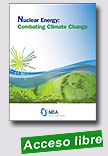 |
Nuclear Energy: Combating Climate Change
Nuclear Energy Agency, 05/11/15, 19 p.
The global response to address climate change is a key policy challenge of the 21st century. Many governments around the world have agreed that action should be taken to achieve large cuts in greenhouse gas (GHG) emissions over the coming decades, to adapt to the impacts of climate change and to ensure the necessary financial and technical support for developing countries to take action.
There is a growing scientific consensus that global annual
|
GHG emissions will need to be reduced by at least 50% from today’s levels by 2050 if the world is to limit the average temperature increase to 2°C by the end of the century and avoid the worst consequences of global warming. This brochure describes the role that nuclear energy can play in helping to combat climate change, and sets that role in the context of all low-carbon electricity sources, with specific references to renewables.
Extraído de: http://www.oecd-nea.org/tools/publication?query=&div=&lang=
&period=6m&sort=title&filter=1#p7208
|
 |
|
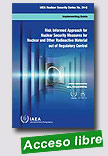
|
Risk Informed Approach for Nuclear Security Measures for Nuclear and Other Radioactive Material out of Regulatory Control
IAEA Nuclear Security Series, 2015, 69 p
This publication provides guidance to States for developing a risk informed approach and for conducting threat and risk assessments as the basis for the design and implementation of sustainable nuclear security systems and measures for prevention of, detection of, and response to criminal and intentional unauthorised acts involving nuclear and other to nuclear and other radioactive material out of regulatory control.
|
radioactive material out of regulatory control. It describes concepts and methodologies for a risk informed approach, including identification and assessment of threats, targets, and potential consequences; threat and risk assessment methodologies, and the use of risk informed approaches as the basis for informing the development and implementation of nuclear security systems and measures. The publication is an Implementing Guide within the IAEA Nuclear Security Series and is intended for use by national policy makers, law enforcement agencies and experts from competent authorities and other relevant organizations involved in the establishment, implementation, maintenance or sustainability of nuclear security systems and measures related
Extraído de: http://www-pub.iaea.org/books/IAEABooks/10677/Risk-Informed-Approach-for-Nuclear-Security-Measures-for-Nuclear-and-Other-Radioactive-Material-out-of-Regulatory-Control
|
 |
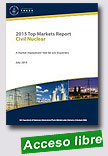 |
2015 Top Markets Report Civil Nuclear - A Market Assessment Tool for U.S. Exporters
United States Department of Commerce, July 2015, 78 p.
ITA’s Civil Nuclear Energy Top Markets Study recognizes the growing demand for civil nuclear
technologies worldwide, and with it, new export opportunities for U.S. companies. Global energy demand growth has intensified concerns about energy security, fuel price stability, and carbon emissions. In response, many national governments are driven to consider building nuclear power .
|
plants as a low carbon, domestically produced base-load solution to their electricity needs. Nuclear markets are shifting from the United States and Western Europe, with the notable exceptio n of the United Kingdom, to East Asia, the Middle East, South America, and Eastern and Central Europe. This has important implications for the global nuclear landscape after 2030. The U.S. Department of Commerce estimates the global civil nuclear market to be valued at $500-740 billion over the next ten years and to have the potential to generate more than $100 billion in U.S. exports and thousands of new jobs. There
are currently 437 nuclear reactors with a combined 376 gigawatt (GWe) capacity operating in 30 countries, and 71 reactors currently under construction in 15 countries.
The intention of this study is to identify best prospect markets where USG activities can most effectively be leveraged to support the success of U.S. companies in the civil nuclear energy sector. It is not intended to be an ordering of priorities for the industry itself, nor is it a direct reflection of industry priorities. The civil nuclear energy industry spans the entire lifecycle of a nuclear power plant and includes reactors, fuel services, nuclear engineering, procurement and construction, and advisory services. U.S. civil nuclear companies represent a broad range of industry subsectors and each has a different set of objectives. Furthermore, it is not the role of the USG to direct industry priorities, but rather to identify where resources can be most effectively leveraged within current legal frameworks to support the already existing export promotion efforts of U.S. companies.
Extraído de: http://trade.gov/topmarkets/pdf/Civil_Nuclear_Top_Markets_Report.pdf
|
 |
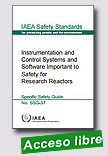 |
Instrumentation and Control Systems and Software Important to Safety for Research Reactors
IAEA Safety Standards Series, 2015, 75 p.
This Safety Guide provides recommendations and guidance on instrumentation and control systems and software important to safety for research reactors, including instrumentation and control system architecture and associated components, from sensors to actuators, operator interfaces and auxiliary equipment. It also provides recommendations on computer based systems and software,
|
including software requirements and design, verification and validation, integration, and operation. This publication also addresses safety classification, design, implementation, qualification and operation of instrumentation as well as control systems. The recommendations and guidance apply to both the design and configuration management of instrumentation and control systems for new research reactors and the modernization of the instrumentation and control systems to existing research reactor facilities. In addition this Safety Guide provides recommendations and guidance on human factors engineering and human machine interfaces, and for computer based systems and software for use in instrumentation and control systems important to safety.
Extraído de: http://www-pub.iaea.org/books/IAEABooks/10719/Instrumentation-and-Control-Systems-and-Software-Important-to-Safety-for-Research-Reactors
|
 |
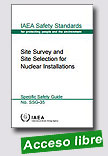 |
Site Survey and Site Selection for Nuclear Installations
IAEA Safety Standards Series, 2015, 61 p.
This publication was prepared under the IAEA’s programme for safety standards and complements other safety guides that deal with all safety considerations in site evaluation regarding the effects of external events and population distribution. It supplements and provides recommendations on meeting the requirements for nuclear installations established in the safety requirements publication on Site Evaluation for Nuclear Installations (IAEA Safety Standards Series No. NS-R-3) in
|
terms of the safety aspects to be considered during the stages of the selection process of a site for a nuclear installation.
Extraído de: http://www-pub.iaea.org/MTCD/Publications/PDF/Pub1690Web-41934783.pdf
|
| |
| |
|
|
| |
|
|
|
|
|
